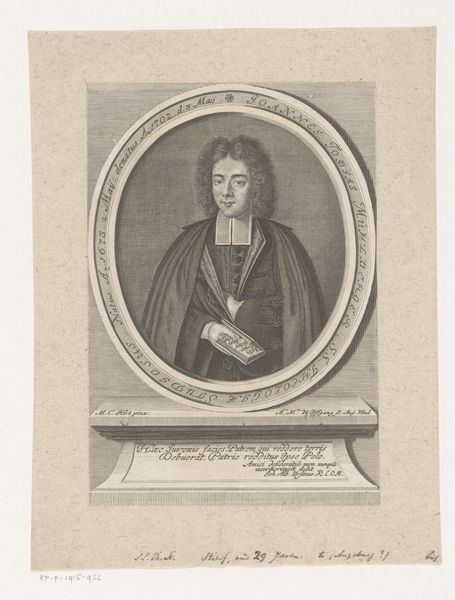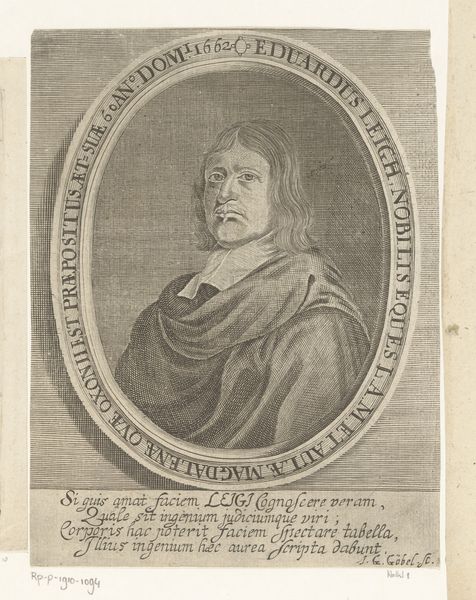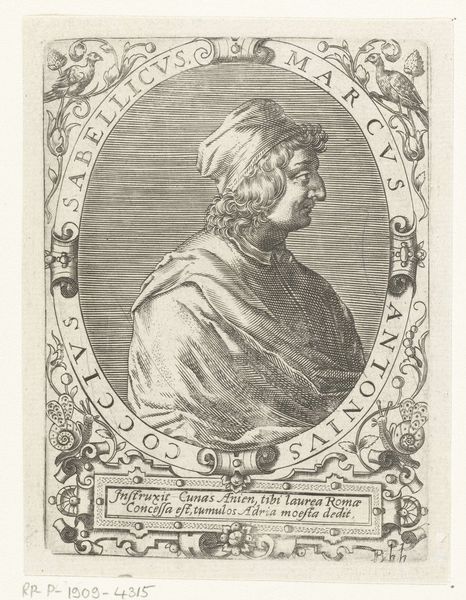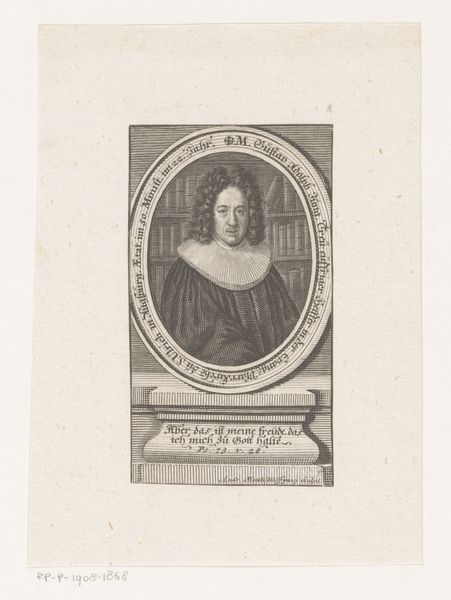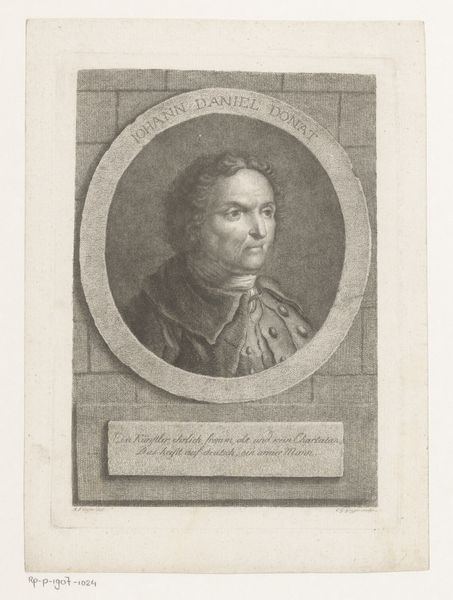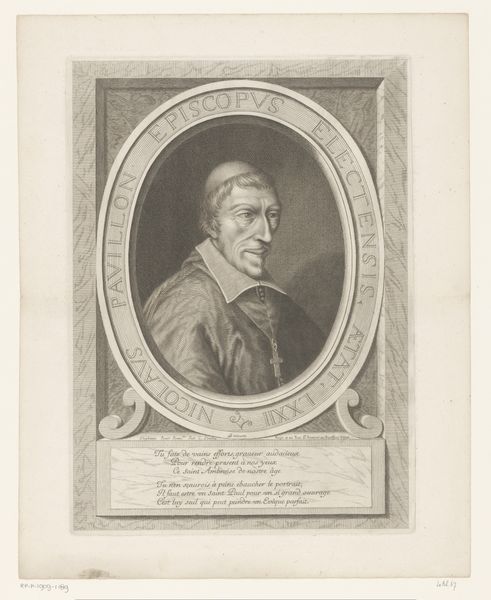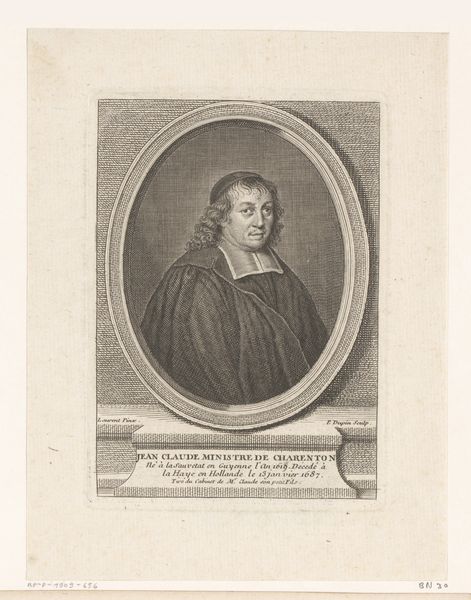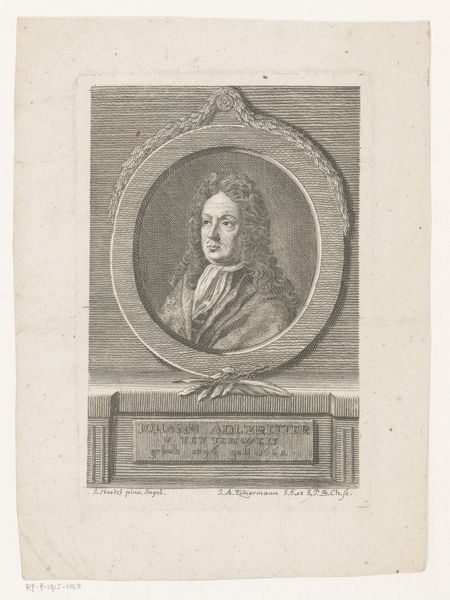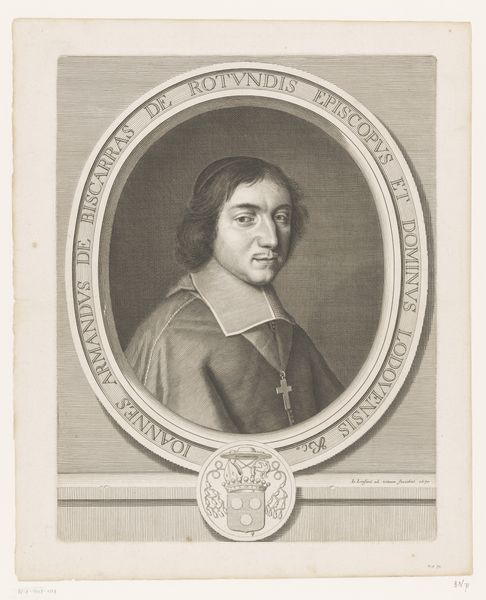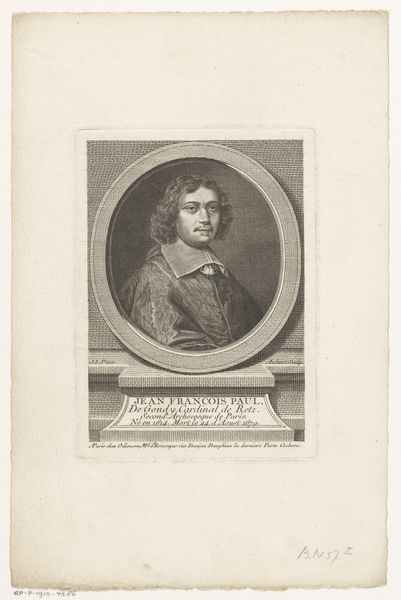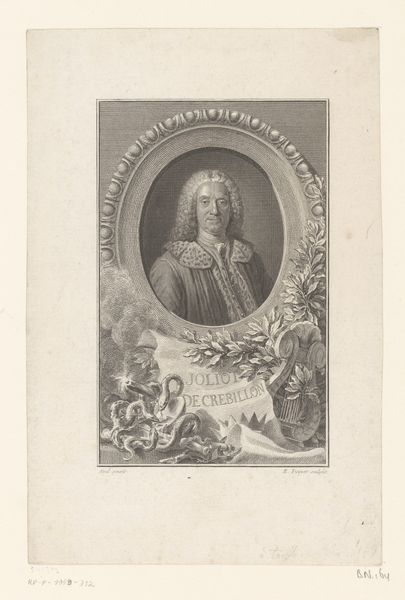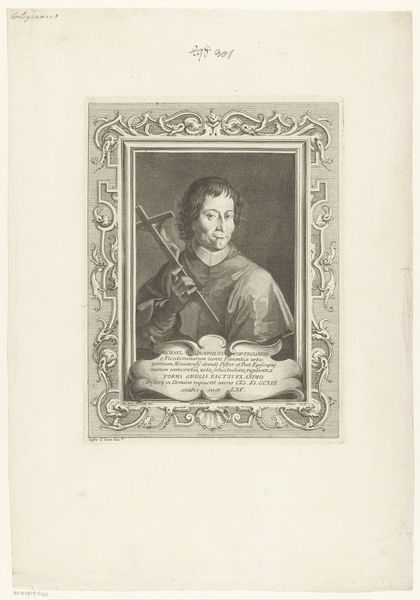
engraving
#
portrait
#
baroque
#
historical photography
#
framed image
#
19th century
#
line
#
history-painting
#
engraving
Dimensions: height 190 mm, width 140 mm
Copyright: Rijks Museum: Open Domain
Curator: Here we have C. Mathey’s "Portret van Niccolò Brancaccio," an engraving dating roughly between 1700 and 1755, currently held in the Rijksmuseum collection. What strikes you first about it? Editor: It feels intensely... austere. A study in serious profile. All those very fine lines seem to trap the figure in a kind of visual amber, embalmed for posterity. It makes me wonder about the subject’s personality – and perhaps even the artist's. Curator: Mathey certainly captures a certain… gravity. This is a Baroque portrait, so we see a careful construction, from the architectural frame—almost like a stage—to the placement of Brancaccio within it. It's all very deliberate. The oval cartouche further focuses our attention. It speaks of an almost academic formality, a setting against which one must then weigh what, to modern eyes, might scan as flaws, to divine character. Editor: Precisely! And perhaps it's in these very “flaws”—the less-than-idealized features, the tousled hair—that we find a flicker of genuine humanity peeking through the constructed image, to counter-balance the otherwise stiff nature of this particular style of baroque art. What’s interesting, also, is the use of line and light. The light gently models his face to allow you to consider every contour. Curator: The light and shadow do play a key role, creating a sense of depth and dimension despite the linear nature of the engraving. The texture in his robes and the intricate detailing of the frame add to the visual richness of the work, and remind you this is still art meant to impress. But yes, you're right. The hint of imperfection, the slight untidiness—these ground the image in reality. I think that might even say something of Mathley’s desire for psychological realism that wasn’t common until later. Editor: It’s a dance, then, between expectation and innovation. Perhaps Mathley has immortalized both Niccolo, and his own individual twist on a style! What is Baroque but another tradition subverted! A tradition based on tension between styles… Curator: So true. It really forces me to consider what truly makes something like this unique, and to find out more about how these particular types of commissions actually worked, because its intent is still so ambiguous. Editor: Indeed! It is that enduring puzzle that keeps art so vibrant and alive centuries later.
Comments
No comments
Be the first to comment and join the conversation on the ultimate creative platform.

